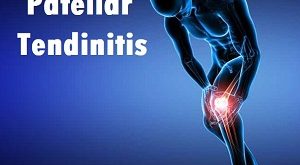What is psoriatic arthritis?
Psoriatic arthritis (PsA) is a painful joint condition that complicates the relapsing chronic skin disease psoriasis. It is considered to be an inflammatory joint disorder and is classified as part of the seronegative spondylarthropathies.
PsA affects between 5% and 25% of people with psoriasis. It is recommended that all psoriasis patients be evaluated at least once a year to detect the earliest signs of PsA. Symptoms such as joint pain, especially in women, heel pain, and clinically significant tiredness and stiffness as well as a general deterioration in physical functioning are important heralds of future PsA in patients who already have psoriasis. Heel pain predicts a fourfold risk of PsA while the risk is doubled in patients with pain, fatigue and stiffness.
The appearance of such warning symptoms frequently predates the appearance of clinical signs and symptoms suggestive of PsA by months or years. Early assessment might enable the patient to take preventive action against the deterioration of joint structure and function.
Types of psoriatic arthritis
There are five types of PsA.
Symmetric PsA
This type affects the same joints on both sides of your body, so both your left and right knees, for example. Symptoms can be like those of rheumatoid arthritis (RA).
Symmetric PsA tends to be milder and cause less joint deformity than RA. However, symmetric PsA can be disabling. About half of people with PsA have this type.
Asymmetric PsA
This affects a joint or joints on one side of your body. Your joints may feel sore and turn red. Asymmetric PsA is generally mild. It affects about 35 percent of people with PsA.
Distal interphalangeal predominant PsA
This type involves the joints closest to your nails. These are known as the distal joints. It occurs in about 10 percent of people with PsA.
Spondylitis PsA
This type of PsA involves your spine. Your entire spine from your neck to your lower back may be affected. This can make movement very painful. Your hands, feet, legs, arms, and hips may also be affected.
Psoriatic arthritis mutilans
This is a severe, deforming type of PsA. About 5 percent of people with PsA have this type. Psoriatic arthritis mutilans usually affects your hands and feet. It can also cause pain in your neck and lower back.
Pathophysiology
Multiple factors contribute to the pathogenesis of PsA, including genetic, environmental, and immunologic factors. The exact cause has not been identified, and the concomitant pathogenic connection between the skin and joints is not clear. There is evidence that activated T cells are present in both skin and joint tissue. It is likely that cytokines such as the tumor necrosis factor (TNF)-alpha play a role in guiding the inflammatory process that leads to cartilage and bone degradation as well skin inflammation. Proinflammatory cytokines involved with skin and joint disease also may be linked to adverse cardiovascular and metabolic outcomes associated with PsA.
What causes psoriatic arthritis?
- The cause of psoriatic arthritis is currently unknown. A combination of genetic, immune, and environmental factors is likely involved.
- In patients with psoriatic arthritis who have arthritis of the spine, a blood test gene marker called HLA-B27 is found in about 50%. Several other genes have also been found to be more common in people with psoriatic arthritis.
- Certain changes in the immune system may also be important in the development of psoriatic arthritis. For example, the decline in the number of immune cells called helper T cells in people with AIDS (HIV infection) may play a role in the development and progression of psoriasis in these patients.
- The importance of infectious agents and other environmental factors in the cause of psoriatic arthritis is being investigated by researchers.
Risk factors for psoriatic arthritis
You’re more likely to get PsA if you:
- Have psoriasis
- Have a parent or sibling with PsA
- Are between the ages of 30 and 50 (though children can get it, too)
- Have had strep throat
- Have HIV
PsA puts you at risk for complications that include:
- Psoriatic arthritis mutilans
- Eye problems, such as conjunctivitis or uveitis
- Cardiovascular disease
Symptoms and Signs of Psoriatic Arthritis
Up to a third of people with psoriasis also get psoriatic arthritis (PsA). Most people are diagnosed between 30 and 50, but you can get it at any age. It causes inflammation, mainly in your joints. And it can affect other body parts, too. Some symptoms can be similar to rheumatoid arthritis, so your doctor may want to do tests to confirm the diagnosis.
Swollen Joints, Fingers, and Toes: Often you’ll notice swelling in your knees, ankles, feet, and hands. Usually, a few joints are inflamed at a time. They get painful and puffy, and sometimes hot and red. When your fingers or toes are affected, they might take on a sausage shape. Psoriatic arthritis might affect pairs of joints on both sides of your body, like both of your knees, ankles, hips, and elbows.
Stiff Joints: Stiff joints are common. They’re typically worse early in the morning.
Back and Shoulder Pain: Pain and stiffness in your neck, upper back, low back, and buttocks could be from inflammation in the joints of your spine and hip bones.
Enthesitis: You could also get inflammation where a muscle connects to a bone, such as the Achilles tendon behind your heel. It might hurt to walk and climb stairs.
Nail Pitting: Many people with psoriatic arthritis see tiny dents, called pitting, and ridges in their nails.
Nail Separation: Sometimes the entire nail pulls away from the nail bed. The separated part might be opaque with a white, yellow, or green tint. Your doctor might call this condition onycholysis.
Chest and Rib Pain: It doesn’t happen often, but chest pain and shortness of breath can be symptoms of psoriatic arthritis. These might happen when the chest wall and the cartilage that links your ribs to your breastbone get inflamed. It’s also rare, but your lungs or your aorta (the large blood vessel that leaves your heart) could be affected.
Fatigue: Both the inflammation process and medications you take for PsA can leave you feeling tired and mentally drained. Eat well, try to rest, and get some exercise. And talk to your doctor about possible other causes.
Complications or health effects of Psoriatic arthritis
If PsA inflammation goes unchecked, it can cause many health problems including:
- Damage to the lining that covers the ends of bones in a joint (cartilage), and the bones themselves. It will get harder to move joints and someone may become disabled.
- Redness, irritation and disturbed vision (uveitis) or redness and pain in tissues around the eyes (pink eye).
- Stomach problems, diarrhea and bloating (gastrointestinal problems).
- Shortness of breath and coughing (lung problems).
- Damage to blood vessels and the heart muscle.
- Weak bones that break more easily (osteoporosis).
People with PsA may also develop metabolic syndrome, which is a group of conditions that includes obesity, high blood pressure and poor cholesterol levels.
Diagnosis of psoriatic arthritis
During the exam, your doctor may:
- Closely examine your joints for signs of swelling or tenderness
- Check your fingernails for pitting, flaking and other abnormalities
- Press on the soles of your feet and around your heels to find tender areas
No single test can confirm a diagnosis of psoriatic arthritis. But some types of tests can rule out other causes of joint pain, such as rheumatoid arthritis or gout.
Imaging tests
X-rays. Plain X-rays can help pinpoint changes in the joints that occur in psoriatic arthritis but not in other arthritic conditions.
Magnetic resonance imaging (MRI). MRI uses radio waves and a strong magnetic field to produce very detailed images of both hard and soft tissues in your body. This type of imaging test may be used to check for problems with the tendons and ligaments in your feet and lower back.
Laboratory tests
Rheumatoid factor (RF). RF is an antibody that’s often present in the blood of people with rheumatoid arthritis, but it’s not usually in the blood of people with psoriatic arthritis. For that reason, this test can help your doctor distinguish between the two conditions.
Joint fluid test. Using a needle, your doctor can remove a small sample of fluid from one of your affected joints — often the knee. Uric acid crystals in your joint fluid may indicate that you have gout rather than psoriatic arthritis.
Treatment for psoriatic arthritis
Treatment for psoriatic arthritis aims to:
- Relieve symptoms
- Slow the condition’s progression
- Improve quality of life
This usually involves trying a number of different medicines, some of which can also treat the psoriasis. If possible, you should take 1 medicine to treat both your psoriasis and psoriatic arthritis.
The main medicines used to treat psoriatic arthritis are:
- Non-steroidal anti-inflammatory drugs (NSAIDs)
- Corticosteroids
- Disease-modifying anti-rheumatic drugs (DMARDs)
- Biological therapies
Non-steroidal anti-inflammatory drugs (NSAIDs)
Your GP may first prescribe non-steroidal anti-inflammatory drugs (NSAIDs) to see if they help relieve pain and reduce inflammation.
There are 2 types of NSAIDs and they work in slightly different ways:
- Traditional NSAIDs, such as ibuprofen, naproxen or diclofenac
- COX-2 inhibitors (often called coxibs), such as celecoxib or etoricoxib
Like all medicines, NSAIDs can have side effects. The doctor will try to reduce the risk by prescribing the lowest dose necessary to control your symptoms, for the shortest time possible.
Stomach problems, such as stomach aches, indigestion and stomach ulcers are possible side effects of NSAIDs.
A medicine called a proton pump inhibitor (PPI) will often be prescribed alongside NSAIDs to help protect your stomach by reducing the amount of acid it produces.
Read more about the side effects of NSAIDs.
If NSAIDs alone are not helpful, some other medicines may be recommended.
Corticosteroids
- Like NSAIDs, corticosteroids can help reduce pain and swelling.
- If you have a single inflamed or swollen joint, the doctor may inject the medicine directly into the joint. This can provide fast relief with minimal side effects, and the effect can last from a few weeks to several months.
- Corticosteroids can also be taken as a tablet, or an injection into the muscle, to help lots of joints. But doctors are usually cautious about this because the medicine can cause significant side effects if used for a long time, and psoriasis can flare up when you stop using it.
Disease-modifying anti-rheumatic drugs (DMARDs)
- Disease-modifying anti-rheumatic drugs (DMARDs) are medicines that block the effects of the chemicals released when your immune system attacks your joints.
- They can help ease your symptoms and slow the progression of psoriatic arthritis. The earlier you start taking a DMARD, the more effective it will be.
- Leflunomide is often the first medicine given for psoriatic arthritis, although sulfasalazine or methotrexate may be considered as alternatives.
- It can take several weeks or months to notice a DMARD working, so it’s important to keep taking the medicine, even if it does not seem to be working at first.
Biological treatments
- Biological treatments are a newer type of treatment for psoriatic arthritis. You may be offered one of these treatments if DMARDs have not worked or are not suitable.
- Biological treatments work by stopping particular chemicals in the blood activating the immune system to attack the lining of the joints.
- Biological medicines that might be recommended include adalimumab, apremilast, certolizumab, etanercept and tofacitinib.
- The most common side effect of biological treatments is a reaction in the area where the medicine is injected, such as redness, swelling or pain. These reactions are not usually serious.
- Biological treatments can also sometimes cause other side effects, including problems with your liver, kidneys or blood count. You’ll usually need to have regular blood or urine tests to check for these.
- Biological treatments can also make you more likely to develop infections. Tell a doctor as soon as possible if you develop symptoms such as a sore throat, high temperature or diarrhoea.
- Biological medicine will usually be recommended for 3 months to see if it helps. If it’s effective, it can be continued. If it’s not effective, the doctor may suggest stopping the medicine or swapping to an alternative biological treatment.
Complementary therapies
- There’s not enough scientific evidence to say that complementary therapies, such as balneotherapy (bathing in water containing minerals), works in treating psoriatic arthritis.
- There’s also not enough evidence to support taking any kind of food supplement as treatment.
- Complementary therapies can sometimes react with other treatments, so talk to a GP, specialist or pharmacist if you’re thinking of using any.
Managing related conditions
As with psoriasis and other types of inflammatory arthritis, you may be more likely to get some other conditions – such as cardiovascular disease (CVD) – if you have psoriatic arthritis.
CVD is the term used to describe conditions that affect the heart or blood vessels, such as heart disease and stroke.
A doctor should carry out tests each year (such as blood pressure and cholesterol tests) so they can check if you have CVD and offer additional treatment, if necessary.
You can also help yourself by:
- Having a good balance between rest and regular physical activity
- Losing weight, if you’re overweight
- Not smoking
- Only drinking a moderate amount of alcohol
Ways to Control Psoriatic Arthritis Prophylaxis Symptoms
People with psoriasis should adopt as many of the following tips as possible to avoid the development of joint damage due to PsA.
Look for and report symptoms such as:
- Whole-body tiredness
- Swollen, painful and tender tendons
- ‘Sausage digits’, or swelling over fingers and toes
- Joint pain, stiffness, swelling and tenderness which is mono- or polyarticular
- Reduced range of movement at the affected joints
- Prolonged morning stiffness
- Nail dystrophy
- Eye changes such as redness and pain
- Characteristic involvement of the DIP of the fingers and toes
- Spinal symptoms
- Pain and tenderness over the wrists, knees or ankles
Since such symptoms typically occur early, and since PsA occurs after the onset of psoriasis in 85% of people, they should be reported immediately.
Other self-help measures include:
- Regular stress-relieving steps such as long walks, swimming, or quiet times to relax and recollect oneself
- Weight control by eating appropriate food in adequate quantities and taking regular exercise
- Going in for testing at least once a year so that early signs and symptoms can be identified early and PsA progression may be slowed. This is crucial because the condition can sometimes worsen very quickly and very seriously, causing extensive joint damage either spontaneously or after an injury.
 Diseases Treatments Dictionary This is complete solution to read all diseases treatments Which covers Prevention, Causes, Symptoms, Medical Terms, Drugs, Prescription, Natural Remedies with cures and Treatments. Most of the common diseases were listed in names, split with categories.
Diseases Treatments Dictionary This is complete solution to read all diseases treatments Which covers Prevention, Causes, Symptoms, Medical Terms, Drugs, Prescription, Natural Remedies with cures and Treatments. Most of the common diseases were listed in names, split with categories.







